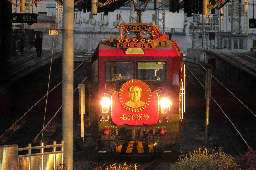Incoming: Heavy use of scare-quotes to emphasize I don’t agree with certain framings which nonetheless get my point across.
It’s hard not to be suspicious of any new housing built in an American city. A new apartment building intended for low-income tenants was opened in the “poor side” of town in an area I used to live.
For op sec, I won’t share which city, but consider a typical American town with rich neighborhoods and poor neighborhoods, and guess where most of the crime and policing is.
Is this a progressive move?
On the one hand, lowering housing costs is always a good thing, especially when it helps people who have less.
On the other hand, it could be a cynical ploy to continue quarantining “the poors” somewhere far away from the “nice” neighborhoods.
My gut feeling is that some sort of mixed-income housing would be the best progressive stepping stone because, gradually, middle class (ie white) people would have an increasing stake in this neglected part of town. But then again, that could also become a form of gentrification which ends up displacing the poorer tenants, so this solution would have to include some sort of rent control to work.
The best thing is a requirement to have low cost units in all housing complexes throughout the city. There are many examples of all-low-income housing projects that are set up to fail by limiting maintenance funding to the rent from people who can’t afford to pay, so you really do have to look at the details.
Another option is publicly owned flats on social rent, based on a percentage of income instead of a fixed price.
Or keeping the prices universally low because a majority of people are poorer and so a majority will end up renting them just by chance, but also with the inclusion of people from all wealth ranges.
disclaimer: nothing is really progressive without the dictatorship of the proletariat
You’re on the right track. I’d say regarding low-income development in capitalism, it can be progressive if it’s not a concentration of poverty but instead used to create income-diverse neighborhoods. That could be building low income developments in medium to high income neighborhoods. It could be mandating a meaningful portion of units within medium to high income buildings be allocated to low income or public housing. It needs strong enforcement from housing agencies, equal maintenance investment, and a way to absolutely negate the political influence of nimbys (you don’t get these things without a DotP or at least very powerful socialist movement).
Anything has gotta be better than Section 8 bullshit. Tax cuts for landlords to not maintain houses.
“progressive” is a meaningless term IMO but to answer the spirit of your question: i don’t think low-income housing developments are good really, presumably they’re all gonna be owned by the same landlords that owned all the other housing stock and therefore won’t actually decrease the cost of rent in the city. there’s no way to get housing prices to go down except by expropriating housing from landlords and giving it to people who don’t currently own a home
Death to America
But then again, that could also become a form of gentrification which ends up displacing the poorer tenants, so this solution would have to include some sort of rent control to work.
I think this is the big issue. For the amount of affordable housing needed in most major metro areas there’s need to be a much larger scale of affordable housing being built.
In NYC at least there’s the 80/20 rule which states that new housing projects need to set aside 20% of units for low to middle income families. What happens when most of the construction is for low unit count luxury buildings though? More gentrification. Like sure technically you are mixing the housing to an extent, but if more of the unites are there for market rates, especially in a city like NYC, then you are really pushing out the poor because chances are that you demolished housing that was previously relatively affordable.
The best thing that can be done is for the government to create its own housing development agency to construct and manage wholly affordable buildings physically located in various parts of the city so as to not segregate the population. Doubt it would ever happen these days though. There isn’t enough political will for it to happen.
Youtube has documentaries on Pruitt-Igoe. When it opened in 1954 in St. Louis, Missouri it was one of the largest public housing developments in the country. I’m American but I know very little about public housing. Still it seems to me the problem for a lot of public housing is that the funding dries up for maintenance, etc - especially as projects get larger. And then douchbags use the problems/failures as “proof” such projects can’t work.
Of course - some of the very same pols and insiders who killed funding are later the same ones crowing about pubilc housing being doomed to failure. And in today’s hyper-partisan environment - there’s clear bipartisan willingness to make public housing fail. The GOP does so proudly. The dems do so covertly.
For the quotations - I edited the text to create shorter paragraphs.
-–
Wikipedia. Full text for the 'decline' section
The Wendell O. Pruitt Homes and William Igoe Apartments, known together as Pruitt–Igoe (/ˈpruːɪt ˈaɪɡoʊ/), were joint urban housing projects first occupied in 1954 in St. Louis, Missouri, United States. The complex of 33 eleven-story high rises was designed in the modernist architectural style by Minoru Yamasaki. At the time of opening, it was one of the largest public housing developments in the country.
It was constructed with federal funds on the site of a former slum as part of the city’s urban renewal program. Despite being legally integrated, it almost exclusively accommodated African Americans. Although initially viewed as an improvement over the tenement housing it replaced, living conditions in Pruitt–Igoe began to deteriorate soon after completion. By the mid-1960s it was plagued by poor maintenance and crime, particularly vandalism and juvenile delinquency.
Numerous initiatives to reverse the decline failed, and by 1970 more than two-thirds of the complex was vacant. Demolition of the complex began in 1972 with a televised implosion of several of the buildings. Over the next four years, the rest of the complex was vacated and demolished.
In the aftermath of its demolition, Pruitt–Igoe became a symbol of the failings of the society-changing aspirations of modernist architecture, as the project’s problems were widely attributed to architectural flaws that created a hostile and unsafe environment. Critic Charles Jencks described its demolition as “the day Modern architecture died”.
More recent appraisals have placed a greater emphasis on St. Louis’s precipitously declining population, and fiscal problems with the local housing authority. The Architectural Review states in a summary of the modern consensus that the project was “doomed from the outset”. As of 2024, a large portion of the Pruitt–Igoe site remains vacant, although new development is pending.
[…]
Decline
By 1958, just four years after the opening of the project, deteriorating conditions were already evident. Elevator breakdowns and vandalism were cited as major problems—Yamasaki later lamented that he “never thought people were that destructive”. Ventilation was poor during St. Louis’s hot and humid summers. Meanwhile, the St. Louis Housing Authority was in the midst of a decades-long problem with inefficient and costly maintenance of its buildings, partly attributed to the power of labor unions.
The stairwells and corridors attracted muggers, a situation exacerbated by the skip-stop elevators. Its location in “a sea of decaying and abandoned buildings” and limited access to shopping and recreation (ground-floor businesses had been eliminated from the design to save money, and the complex had no public mailbox) contributed to its problems. The huge, 11-story buildings of the development were reportedly a magnet for criminals and vagrants from the surrounding low-rise slums.
A 1959 audit reported that most of the vandalism was done by transients rather than residents, and a 1967 report similarly found that a “relatively large proportion” of crimes were committed by outsiders. Large criminal gangs were not common in the project. The Recession of 1958 led to increased crime, vacancy, and rent delinquency in the development, which cut into the housing authority’s revenue.
In response, the authority reduced maintenance by 10 percent, and the reduction in maintenance coupled with a grand jury report that criticized crime levels in Pruitt–Igoe caused a significant drop in applications to the development. Increasing vacancy rates set off a feedback loop where the loss of revenue from rent forced the housing authority to curtail maintenance, further reducing the project’s desirability.
Occupancy at both Pruitt and Igoe peaked in the first years, at 95 and 86 percent, respectively. In the 1960s, Pruitt remained about 75 percent full and Igoe 65 percent. In 1969, those numbers fell to 57.1 percent and 48.9 percent; at one point the vacancy rate was higher than any other public housing complex in the country. The annual turn-over rate was 20 percent.
After 1960, the rental income from Pruitt–Igoe failed to cover the cost of operation, forcing the housing authority to tap into its reserves and causing cutbacks at other developments, which were themselves profitable. Attempts by local authorities to improve living conditions were handicapped by lack of resources, though numerous programs, including the hiring of private security, rent incentives to attract new tenants, and grants for academic studies, were tried.
As the financial position of the authority worsened, it raised the minimum rent from $20 a month in 1952, to $32 in 1958, $43 in 1962, and $58 in 1968. The increases forced some families to devote as much as 75 percent of their income to rent. In addition to the rent increases, tenants were charged for basic services like replacing fuses and door locks. The rent increases were a major factor in a nine-month rent strike by tenants in 1969.
The strike began on February 2 at other public housing projects in the city and spread to Pruitt–Igoe by April 1. It ended with a settlement under which the board of commissioners of the housing authority resigned and tenant organizations were granted more influence. In 1965, the project received a federal grant to improve the physical condition of the buildings and establish social programs for residents, but the grant failed to reverse the decline.
Between 1963 and 1966 it was the subject of a sociological study by Lee Rainwater. In 1966, the Pruitt–Igoe Neighborhood Corporation commissioned a survey of the housing project that catalogued numerous issues with its maintenance, security, and management. Basic services like elevators and heating often failed, and maintenance sometimes took years to respond to tenant requests.
The withdrawal in 1967 of a private security force that patrolled the buildings led to a further escalation in crime and vandalism, which was partially attributed to the large number of juveniles in single-parent households; a census undertaken in September 1965 found that 69.2 percent of inhabitants were minors, and less than 30 percent of households with children had both parents present.
Teenage pregnancy and juvenile delinquency were considered major problems by the residents. Families at Pruitt–Igoe were large: the average household had four minors. Nearly half of births (and 73 percent of first-born children) were out of wedlock, though this statistic was no higher in Pruitt–Igoe than in nearby private housing.
In spite of the widespread issues, most inhabitants of Pruitt–Igoe continued to live ordinary lives, and, according to Rainwater and activist Joan Miller, “the vast majority … responded to their sick society in a healthy manner.” 78 percent of residents reported that they were satisfied with their apartment, and 80 percent said that Pruitt–Igoe met their needs “a little better” or “much better” than their previous place of residence.
The project contained isolated pockets of well-being throughout its worst years, and apartments clustered around small, two-family landings with tenants working to maintain and clear their common areas were often relatively successful.
We don’t really have enough context to answer this question, besides the fact that you live in an american city. But the thing is that you don’t need us to answer your question either. Towns are subject to planning, which is documented and therefore the full context of every decision is available to you and to civil society organizations.
From what I understand the fundamental problem with housing in the imperial core is that the same moneyed interests in charge of rent and real estate speculation are also placed in charge of building housing. Therefore you’ll have just enough housing to expand the market in the name of asset managers and landlords, but never to deflate costs for businesses and workers.
Every city in a capitalist context is gonna have a center and a periphery, with a neglected part of town and a well funded part of town. Gentrification is always gonna happen because there’s no political segregation between those two. People are always moving and economies are always changing. That is not to say that these are natural processes. Only to go back and put more emphasis on what I said earlier. The city is planned. It is planned to move people and businesses around, to extract money for the moneyed interests, to funnel state funds here and there. That is the context that makes a large, low income housing project ‘good’ or ‘bad’.







